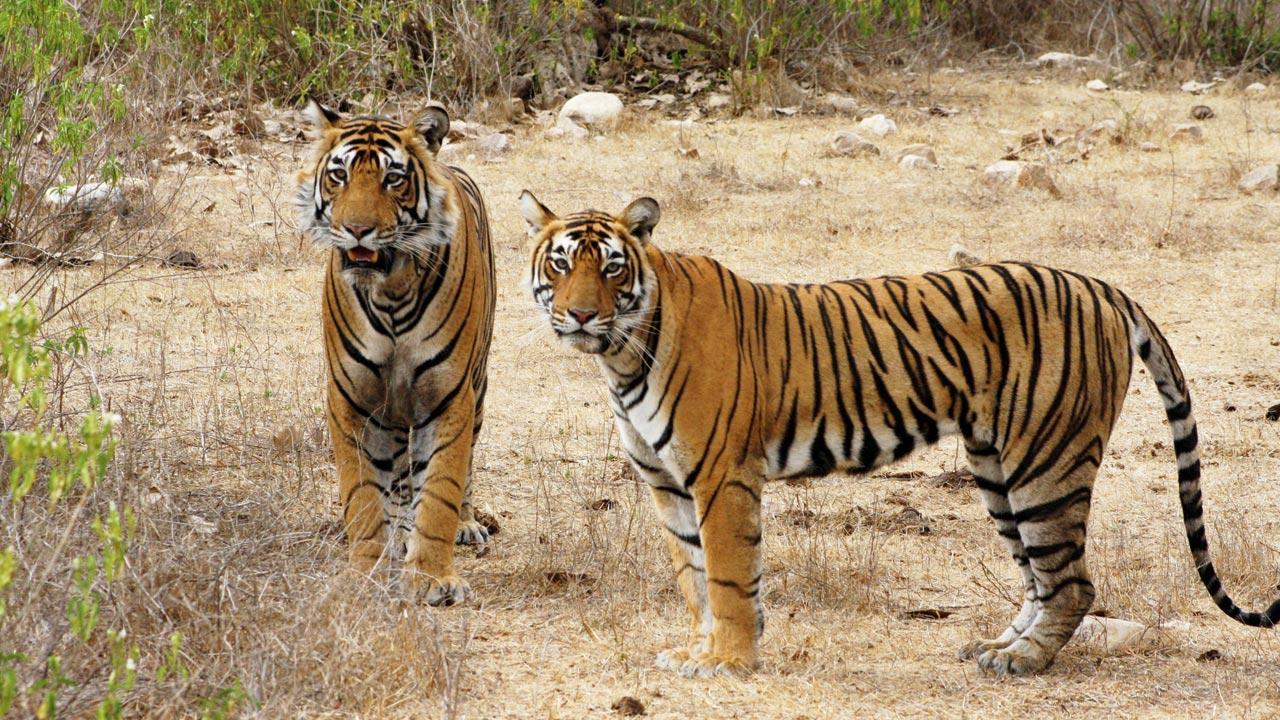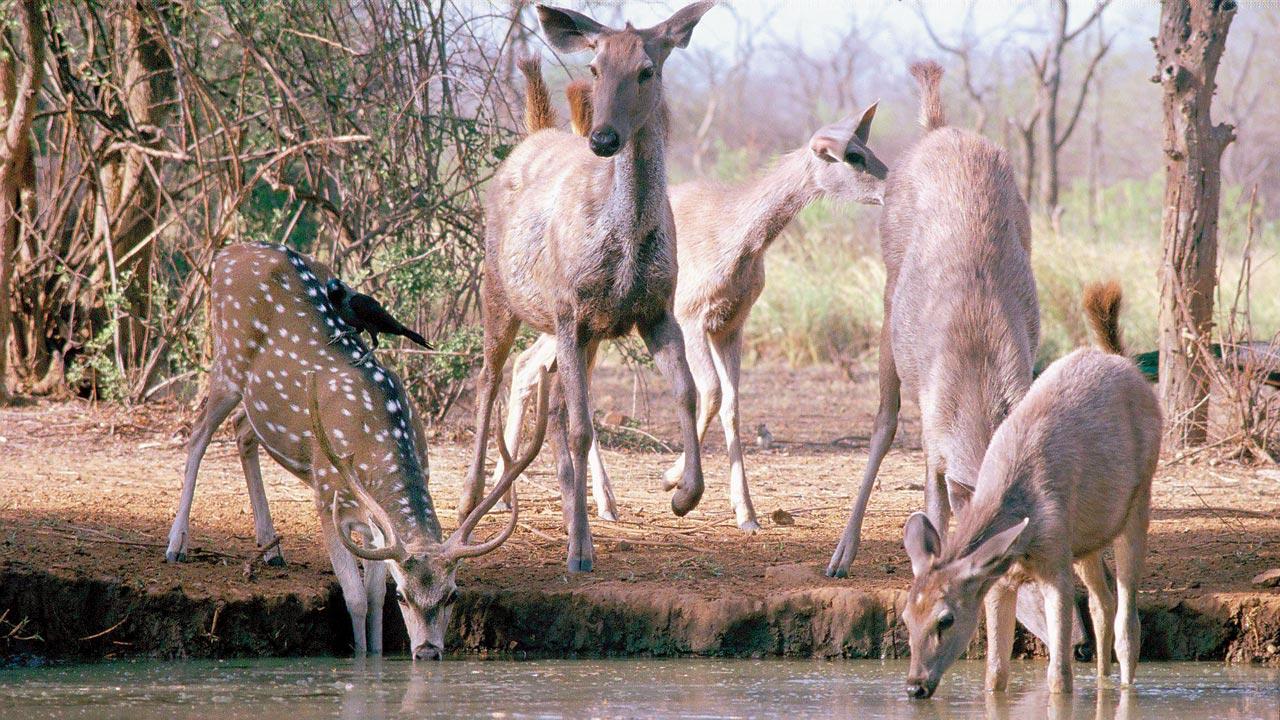Sunayan Sharma’s new book offers readers front-row tickets to the life of a forest officer who has been instrumental in conserving wildlife reserves of Rajasthan

The first tiger couple reintroduced from Ranthambore to Sariska
Reading Sunayan Sharma’s Wild Treasures and Adventures (Niyogi Books) feels quite like sitting around a bonfire, listening to stories about the electric life of a forester. Sharma has devoted four decades to his career in the Indian Forest Services. What one reads, then, are the jungle diary notes of the writer transformed into a compilation of 17 essays. This makes for a compelling read as the stories retain Sharma’s proximity to the encounters he writes about. They range from incidents of first sightings to poaching, timber smuggling, translocation of tigers to Sariska Tiger Reserve, learning about the culture of the original inhabitants of the forests, and being stopped by a mother elephant calling out to her missing calves.
ADVERTISEMENT
 Sambar at the waterhole in Sariska Tiger Reserve
Sambar at the waterhole in Sariska Tiger Reserve
“I didn’t want the book to be something that an outsider doesn’t understand. When I wrote the books on Sariska Tiger Reserve and Bharatpur Wildlife Sanctuary a few years ago, I realised that they may not be too useful for the aam aadmi. They read like textbooks. But I have always kept diaries which have been full of exciting details about the wildlife and my time spent in the reserves,” he shares with us over a telephone conversation from Jaipur. What’s interesting about these diary notes is that not only do they give an insight into his encounters with animals and the inhabitants but also highlights what it takes to keep forests and wildlife safe.
 (Left) Siliberi nullah is a lifeline for Sariska’s wildlife; (right) Kalighati forest from Mehrotra Point. Pics courtesy/Sunayan Sharma
(Left) Siliberi nullah is a lifeline for Sariska’s wildlife; (right) Kalighati forest from Mehrotra Point. Pics courtesy/Sunayan Sharma
The chapter titled Shikar and Politics stands out in this regard. It brilliantly captures the regular scuffles between villagers who depend on the reserve for their everyday forest-based needs, poachers who are on the look-out for hunting opportunities, forest officials trying to maintain order and keep encroachers away, and police officers who may sometimes have to be involved.
 Sunayan Sharma
Sunayan Sharma
“Poaching has reduced today but it hasn’t disappeared completely,” Sharma informs us. He notes the devastating effect of such activities in an important chapter dedicated to the extinction of tigers at the Sariska Tiger Reserve. The chapter is also a great introduction to the process and protocols involved in the translocation of animals, following such extinction. Talk veers to Sharma’s thoughts on a similar process taking place for cheetahs in the Kuno National Park, having led the task of rehabilitation of tigers from Ranthambore to Sariska himself. “When an animal is brought to a new habitat, it initially feels very disturbed. It takes its time to adjust to the new environment. A cheetah will feel at home properly once she gives birth to two litters of cubs. We will begin to see an increase in its population after two generations. If the process has been designed with full commitment and without laxity, then I’m sure the project is going to be ultimately successful,” he says, stressing on the importance of care at every step.
For Sharma, the need for humans to have a deep connection with nature is crucial. This is evident in his diary notes throughout. His love and attention towards nature is marked by a distinct assiduity with which he planned and executed his tasks. “Humans need to know their limits,” the veteran remarks.
One doesn’t need to look too far to know the repercussions of disrespecting these limits. Incidents of leopards leaving Mumbai’s Sanjay Gandhi National Park and entering human habitation are a telling example. When we bring this up, he explains, “The problem is that we have cleared up the forests and constructed buildings, taking away the buffer zone. We need to save the buffer zone. It is natural that an animal will step out when there isn’t enough provision for water and food inside.” It’s essential, he adds, that we understand this and stop threatening their habitat.
Available at Leading bookstores and estores
 Subscribe today by clicking the link and stay updated with the latest news!" Click here!
Subscribe today by clicking the link and stay updated with the latest news!" Click here!







